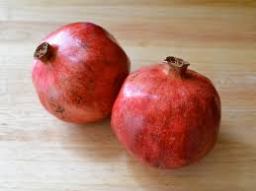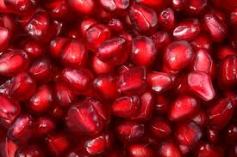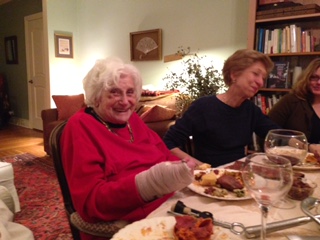Moderator’s Note: This was originally posted on Rosh Hashanah Sept 10, 2015. Rosh Hashanah this year begins on Sept. 15th but FAR will be taking a 16 day hiatus at that time so we are posting today.
When I was growing up in the 1950s in my Egyptian Jewish immigrant
My father, an Orthodox man who prayed each morning and went regularly to the local Sephardic synagogue in Brooklyn, privately followed the tenets of his faith. But it was my mother, unconsciously devout, who brought the public rituals of our religion to life. As a child, I longed to be at prayer with my father and was envious of the men and boys who studied and recited the sonorous ancient Hebrew; I did not want to be confined to polishing the silver and setting the table. But today, as an adult, I am grateful for the silent teachings bequeathed to me by my mother.

Passover had special meaning for us because our family’s departure from Egypt in 1951 seemed a reenactment of the exodus of the ancient Hebrews; but Rosh Hashanah—that holy day without explanatory narrative—was even purer in its celebration of abundance and blessing, renewal and return. Each year, I looked forward to the new moon in Tishrei that coincided with the arrival of autumn in New York and the beginning of the school year. It seemed especially fitting to mark this time of bright blue skies and fresh clean air as the start of our New Year.

While our Ashkenazi neighbors discreetly celebrated Rosh Hashanah with sweet round challah and apples dipped in honey to symbolize their wishes for a sweet year, we enacted the elaborate, extravagant Sephardic seder.
On our table, the crimson pomegranate seeds my mother had carefully separated from the skin glistened like jewels illumined from within; a pale green jam made from the grated flesh of a gourd, scented with rosewater and studded with thin slivers of blanched almonds, shone similarly with a numinous, interior light. Bowls of black-eyed peas simmered with cinnamon and tomatoes were arrayed beside a delicately-flavored leek omelet, breaded and fried brains, roasted beets, fresh dates, apples, and—best of all—a previously untasted new fruit of the season: usually fresh fig or persimmon or prickly pear.
These were the ritual foods, painstakingly prepared and then consumed with deliberation and delight after the recitation of a specific prayer: “May our mitzvoth (good deeds) be as numerous as the pomegranate seeds”; “May we be as a head and not a tail”; “May the evil of our verdicts be ripped”; “May our enemies depart.” The specific prayers often involved puns, as my father explained: the Hebrew for “gourd” is close to the words for “ripped apart”; “beet” is a homonym for “depart.” To me as a child, this association of the sounds of words with the performance of actions seemed especially charged and magical, as indeed it was: The Word made Flesh. Unconsciously, I knew that around that shining table, I was experiencing the Divine.
Had I been born just a few years later, or had our immigrant Jewish community been a little more liberal, I might have found my way to Hebrew school, and perhaps even gone on to become a rabbi, for I always longed to be in closer communion with Divinity. As it was—alienated by what I experienced as the patriarchal focus of Judaism, I turned away from my family’s faith, while still seeking a form for my devotion. I embraced yoga, Native American rituals and the Goddess, eventually becoming initiated as a Wiccan Priestess—only to find that I had been led back to my mother’s practices.

For what was the Rosh Hashanah seder other than a new moon ritual, a circle cast with love and clear intention, a sharing of cakes and ale, communion? What were we doing other than celebrating the presence of the Divine among us, the embodied Goddess in our lives, what Carol Christ has called “the intelligent embodied love that is the ground of all being” (Rebirth of the Goddess, 107)?
Over time, I gained the courage to create Rosh Hashanah gatherings of my own. Like my mother, I cleaned and shopped and cooked and prepared, taking time away from my ordinary routines of teaching and writing. To chop vegetables, to prepare the pomegranates, to simmer the beans and cook the leeks—each action became a prayer, each gesture a link that bound me to my mother and all the generations of women before her.
Following the custom I inherited from my family, for many years I tried letting my brother, a cousin, or another male lead the prayer as my father did. After all, I do not read Hebrew, and the habit of deferral to male authority is still deep within me. But the men I know do not approach their assignment with the same seriousness with which I intend it. And so, having cleared the space, I now allow myself to fill it: in all sincerity and humility, I lead the ritual, using what I have learned from my Wiccan rituals, as well as all the years of watching my father. As I do so, my heart opens and the words take form. I have come full circle.
I write this during the month of Elul, as the moon waxes in preparation for its return to darkness, and the shofar is sounded daily to awaken us from our slumbers. I await the coming of the next new moon, as I cleanse my inner and outer being, and begin to envision the Rosh Hashanah Seder that will bring my family and friends together in this ancient ritual of renewal and return.
Blessed be!

BIO: Joyce Zonana is a writer and literary translator. Her most recent translation, Tobie Nathan’s A Land Like You, a novel about Egypt’s Jews, is available from Seagull Books. Her memoir, Dream Homes: From Cairo to Katrina, an Exile’s Journey was published by the Feminist Press. She is currently at work on a translation of Edmond Amran El Maleh’s Mille Ans, Un Jour, a novel about Arab-Jewish life in Morocco. . Her most recent translation is Henri Bosco’s The Child and the River, published by NYRB Classics, a short novel that celebrates the presence of the divine in nature— a sort of paean to the Goddess in the form of the four elements. Water, air, earth, and fire … You can view it here.


I entered into a kind of sacred space as I read about the food preparation for this beautiful ritual…glad that you have been able to embrace your own sanctity Joyce. A beautiful enactment. Thank you. And oh the pomegranate…
LikeLike
Thank you for your comment Sarah. Yes, the pomegranate!
LikeLiked by 1 person
Flory Jagoda z’il, a well-known Sephardic musician, explained that the men went to synagogue while the women taught the children in the home. She wrote a number of songs about women’s rituals; the best known is Ocho Kandalikas.
LikeLike
Your post so beautifully illustrates ritual at its best and most poignant. Thank you. Can you talk more about the symbolism of the pomegranate? As you may know I feel a kinship with Persephone, and she is Greek. How does the pomegranate figure into Jewish beliefs?
LikeLike
I don’t know the answer to this either, but don’t pomegranates figure prominently in the imagery in the Song of Songs?
LikeLiked by 1 person
Alas, not a (direct) reference to Persephone. It symbolized prosperity to the Egyptians. In Exodus 28:31 God tells Moses to make his brother Aaron’s priestly robe “entirely of blue cloth, with an opening for the head in its center. There shall be a woven edge like a collar around this opening, so that it will not tear. Make pomegranates of blue, purple and scarlet yarn around the hem of the robe, with gold bells between them. The gold bells and the pomegranates are to alternate around the hem of the robe. Aaron must wear it when he ministers. The sound of the bells will be heard when he enters the Holy Place before the LORD and when he comes out, so that he will not die.” [New International translation]
LikeLiked by 1 person
Judith, I think these things are all connected. I am not sure how other than the theme of death and “life everlasting” (“he will not die”) as I wrote in response to Joyce.
In my book When Moses was a Shaman, I make a case that Moses a symbol of the seed (he is floated down the Nile in a tebah and the only other time that word is used is in relation to Noah’s ark which is also a tebah. And then based on the Sumerian form of the myth of the ark, the tebah didn’t carry live animals but carried seeds.). But this is his brother Aaron not Moses – sure does give a lot to consider.
And well Persephone is all about seeds too. I hope this makes sense. My mind is spinning with the possibilities.
LikeLike
Interesting exercise, to connect the dots/seeds. If the women were the weavers/seamstresses they would have been the ones to carry out the instructions for the robes of the high priest. I imagine them doing a ritual with pomegranates and bells as they work.
LikeLiked by 1 person
Such a good question, Janet. I wish I knew the answer. All I know is that when we taste the pomegranate at the Rosh Hashanah seder, we say “may our good deeds be as numerous as the seeds of the pomegranate,” which are reputed to be equal in number to the mandated mitzvoth
LikeLiked by 1 person
An interesting statement which I have written down. Thank you for it. I think there is much to study here. Seeds beget seeds. I think it was in something I read of Vandana Shiva’s (not sure) where seeds are the beginning and end of a plant. You plant a seed as its beginning and as the plant goes through its life cycle and dies, it creates new seeds. So “numerous as seeds of the pomegranate” could be a form of “life everlasting.”
LikeLike
I love this conception (!) of the life-cycle of seeds. And I much prefer “life everlasting” to 613 (which is easy for me to remember because it’s my telephone area code.
LikeLiked by 1 person
Thank you for sharing your beautiful ritual Joyce, It was full of joy with a real sense of home. I actually felt like I was being welcomed. And I love pomegranates, seeds shining like rubies and so good for the heart on many levels.
LikeLiked by 1 person
Thank you Iona! You are indeed being welcomed in!
LikeLike